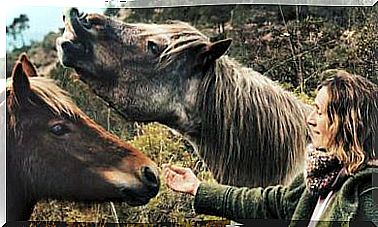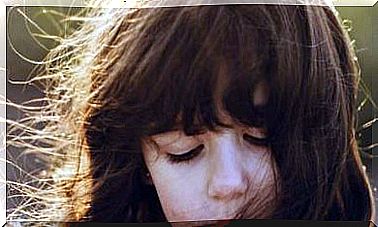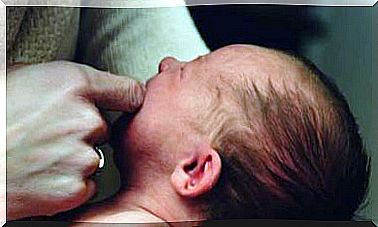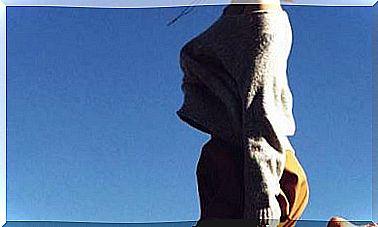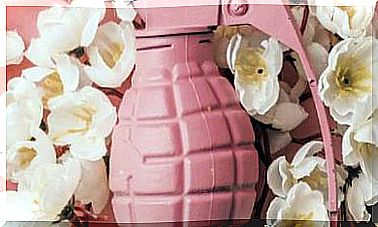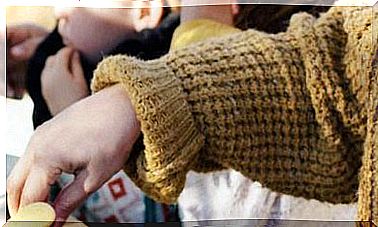5 Reasons To Banish Wool From Our Wardrobe
As with egg consumption, the idea that the wool industry is harmless to sheep still persists. Nothing is further from reality.

“I have, I have, I have three sheep in a cabin. One gives me milk, another gives me wool and another supports me all week. ” Who has not hummed these lyrics during their childhood? This and other songs, as well as most of the information we can find about animals in children’s content and even in textbooks, offer us this vision about them: they are here to give us things.
And they not only exist to give us things, but they do it with delight. This is how many advertisements and marketing campaigns show us, in which animals happily offer themselves to us : cows cooking hamburgers, smiling chickens with trays of wings, pigs cutting ham … Advertising perversion knows no limits when it comes to marketing products. of animal origin. Have you noticed?
What the wool industry won’t tell you
If there is a product about which there is real confusion, it is wool: soft sweaters, warm scarves, warm hats whose material evokes the bucolic image of peaceful flocks of sheep in the field, happy animals in freedom that are sheared from time to time ” because they need it ”.
The truth is that the wool that we consume today has nothing to do with that representation that inhabits the collective imagination, on the contrary, it comes from an industry whose processes are enormously harmful to sheep. An industry in which these sensitive animals are horribly abused and used as mere production machines.
As information is power for change, we are going to see below 5 reasons to replace wool in our cabinets.
1. Genetically manipulated
Sheep wouldn’t need to be sheared if it weren’t for human intervention. Sheep naturally produce the amount of wool they need to protect themselves from extreme temperatures, both hot and cold.
For thousands of years, these animals have been genetically selected to produce a completely disproportionate and unnatural amount of wool, often reaching up to half their body weight.
2. Amputations during shearing
As is often the case in all animal husbandry industries, the economic benefit is always above the welfare of the animals. Wool production is no exception, and shearers are often paid by the sheep, not by the hour.
This makes shearing extremely fast and typically results in injuries to sheep ranging from skin cuts to accidental amputation of udders, ears, penises and other body parts.
3. Violence and assaults
Sheep are extraordinarily sensitive and highly social animals that suffer great stress when they are removed from their group, so when they are led to the shearing stables, they are often terrified, resist and try to flee.
The organization PETA published an investigation in 2014 showing how workers regularly hit, punch and kick sheep to immobilize them, how they violently throw them to the ground when they try to escape and how many of them come out of the shearing process bleeding from the nose from the blows received.
4. Mulesing, torture in the name of production
Due to the genetic modification that sheep have undergone, their skin is exaggeratedly wrinkled: the more wrinkles, the more wool a single animal produces. But also more sweat and a higher risk of infections.
In Australia, the largest wool producer in the world, mulesing is common, a practice that consists of literally cutting pieces of skin and meat from the area surrounding the anus of lambs, to encourage flies that deposit their larvae in the sweaty skin of the sheep, do it in that unprotected area and do not damage the rest of the wool. Thus they save veterinary expenses by directly mutilating the body of these sensitive animals.
Can you imagine day after day with a raw wound?
5. Its effect on climate change
The wool industry does not only harm animals, but also ecosystems. The excrement of these animals contributes significantly to the greenhouse effect, whose fermentation is equivalent to a quarter of the methane emissions.
In New Zealand, methane emissions come mostly from sheep and account for 90% of the country’s greenhouse gas emissions.
The waste generated by the wool industry in countries such as Australia, China or New Zealand, which are the main producers and exporters in the world, generates high levels of contamination of the land and water, being in areas close to the farms levels of contamination that exceed sanitary standards.
As we can see, the reality of wool has nothing bucolic or natural for the more than one billion sheep that are raised every year around the world for its production.
What can we do to help these defenseless animals? Look at the labels and replace the wool in our garments with synthetic fabrics. Today we have at our disposal a wide range of textiles to protect us from the cold without harming animals or the environment.
Because the sheep do not give us wool, we take it from the sheep.


